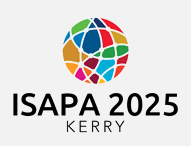Start Date
17-6-2025 12:30 PM
End Date
17-6-2025 2:00 PM
Abstract
Introduction
Research indicates that aquatic therapy (AT) sessions lead to children feeling happy, relaxed, and calm, and enable them to participate in other activities in school (Muñoz-Blanco et al., 2020). However, to the best of our knowledge, none of the recent reviews have thoroughly or specifically examined the use of AT for children and adolescents with various types of disabilities. The objective of this scoping review was to analyze type of evidence in relation to the use of AT in children and adolescents with disabilities. Such analyze may improve quality of future AT programs, contributes to achievement of health and well-being, and create new opportunities to thrive.
Methodology
This scoping review was conducted in accordance with the JBI methodology (Peters et al., 2020). The eligibility criteria were as follows: participants - children and/or adolescents with disabilities aged from 6 to 18 years old; concept - AT interventions; context - any available setting. The 9 databases were searched, and one register, Cochrane Central Register of Controlled Trials.
Results
In total, 52 reports met the inclusion criteria. Most of the studies included children/adolescents with autism spectrum disorder (ASD; 46.7%) in 21 studies in total. The majority of interventions were based on aquatic exercise (35%). Most often, interventions were conducted for 8 weeks, with 2 sessions a week lasting 60 min.
Conclusions
This scoping review could guide practitioners, clinicians, and researchers on what type, setting, and content of AT interventions, including exercise types, intervention duration, number of sessions, frequency, facility, and provider, are used with children and adolescents with disabilities.
References
Muñoz-Blanco, E., Merino-Andrés, J., Aguilar-Soto, B., García, Y. C., Puente-Villalba, M., Pérez-Corrales, J., & Güeita-Rodríguez, J. (2020). Influence of Aquatic Therapy in Children and Youth with Cerebral Palsy: A Qualitative Case Study in a Special Education School. International Journal of Environmental Research and Public Health, 17(10), 3690.
Peters, M. D., Godfrey, C., McInerney, P., Munn, Z., Tricco, A. C., & Khalil, H. (2020). Chapter 11: scoping reviews. JBI manual for evidence synthesis, 169(7), 467-473.
Recommended Citation
Morgulec-Adamowicz, Natalia; Jakobowicz, Oliwia; Alexander, Lyndsay; Marinho-Buzelli, Andresa; Devion, Catherine; and Ogonowska-Slodownik, Anna, "A Scoping Review of Aquatic Therapy for Children and Adolescents with Disabilities" (2025). International Symposium of Adapted Physical Activity and International Symposium on Physical Activity and Visual Impairment and Deafblindness. 25.
https://sword.cit.ie/isapa/2025/day2/25
A Scoping Review of Aquatic Therapy for Children and Adolescents with Disabilities
Introduction
Research indicates that aquatic therapy (AT) sessions lead to children feeling happy, relaxed, and calm, and enable them to participate in other activities in school (Muñoz-Blanco et al., 2020). However, to the best of our knowledge, none of the recent reviews have thoroughly or specifically examined the use of AT for children and adolescents with various types of disabilities. The objective of this scoping review was to analyze type of evidence in relation to the use of AT in children and adolescents with disabilities. Such analyze may improve quality of future AT programs, contributes to achievement of health and well-being, and create new opportunities to thrive.
Methodology
This scoping review was conducted in accordance with the JBI methodology (Peters et al., 2020). The eligibility criteria were as follows: participants - children and/or adolescents with disabilities aged from 6 to 18 years old; concept - AT interventions; context - any available setting. The 9 databases were searched, and one register, Cochrane Central Register of Controlled Trials.
Results
In total, 52 reports met the inclusion criteria. Most of the studies included children/adolescents with autism spectrum disorder (ASD; 46.7%) in 21 studies in total. The majority of interventions were based on aquatic exercise (35%). Most often, interventions were conducted for 8 weeks, with 2 sessions a week lasting 60 min.
Conclusions
This scoping review could guide practitioners, clinicians, and researchers on what type, setting, and content of AT interventions, including exercise types, intervention duration, number of sessions, frequency, facility, and provider, are used with children and adolescents with disabilities.
References
Muñoz-Blanco, E., Merino-Andrés, J., Aguilar-Soto, B., García, Y. C., Puente-Villalba, M., Pérez-Corrales, J., & Güeita-Rodríguez, J. (2020). Influence of Aquatic Therapy in Children and Youth with Cerebral Palsy: A Qualitative Case Study in a Special Education School. International Journal of Environmental Research and Public Health, 17(10), 3690.
Peters, M. D., Godfrey, C., McInerney, P., Munn, Z., Tricco, A. C., & Khalil, H. (2020). Chapter 11: scoping reviews. JBI manual for evidence synthesis, 169(7), 467-473.


